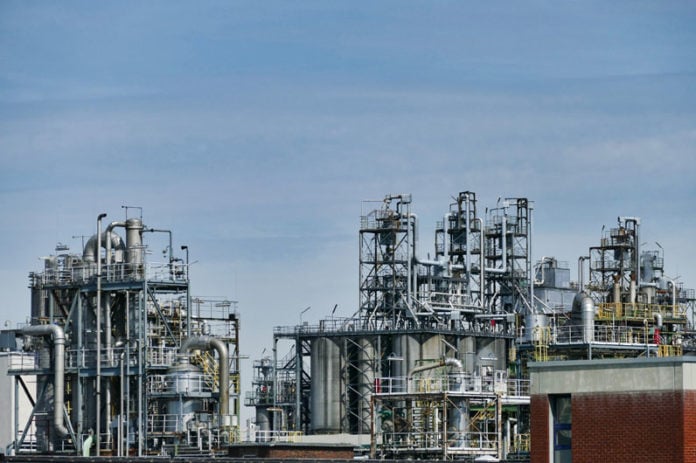Natural gas is a relatively clean and cheap energy source that is abundant and produces less air pollution than coal and oil when burned.
However, one challenge with natural gas is transportation.
Conventionally natural gas is usually transported through pipelines.
Since pipelines are not available everywhere, sometimes natural gas which can be a by-product of oil production is flared (burned) because transporting or using it on location is not always possible.
This is where liquefied natural gas (LNG) comes into play.
Related: What is Flaring in Oil and Gas?
What is LNG?
LNG is a natural gas that is compressed and cooled to transform it into a liquid form.
Natural gas is mostly made up of methane with a small fraction of other hydrocarbons.
By compressing natural gas its volume can be decreased by up to 600 times.
This means that 600 cubic meters of natural gas can be compressed into just 1 cube of liquid gas.
This makes transportation much easier, especially in places where using pipelines is not feasible like for example over the ocean.
LNG is not a new way to store and transport natural gas but it is becoming more popular because of the shift toward greener energy sources and the abundance of natural gas due to improvements in drilling and completion technologies such as horizontal drilling and fracturing.
Related: How is Crude Oil Transported?
How LNG is Produced?
After the gas is produced from the wells, it is cleaned up to remove any impurities such as water as well as other gasses like propane/H2S/CO2.
Liquefying natural gas requires specially designed plants and that’s why building LNG infrastructure can be expensive.
Often several natural gas companies come together to build LNG infrastructure to lower the costs.
The main challenges with building LNG plants are getting approvals and doing construction in remote areas which make LNG projects even more expensive due to the lack of roads.
However, with the development of new technologies, the costs of building LNG plants will likely drop and will make LNG more affordable.
It is also likely that in the future smaller-scale LNG plants will become more common in remote fields.
This will allow liquefying natural gas right on location instead of building only one big LNG plant that still requires pipelines to carry natural gas from the field.
Related: What Is Coal Bed Methane?
How is LNG Transported?
In most cases, the goal is to ship LNG overseas in tankers. Currently, Asia is a big importer of LNG.
Specially designed tanks that limit heat transfer are used for LNG storage to keep it under pressure and at low temperatures.
In addition, tankers have to be equipped with leak detection systems to prevent the escape of natural gas.
One advantage of LNG over crude oil is that because of the low boiling temperature even if there is a release of LNG in the middle of the ocean, it will evaporate instead of causing a spill and potentially harming marine life.
However, it is highly flammable and if an escaped LNG encounters an ignition source it might result in a fire.
After LNG reaches its final destination, it needs to be converted back into a gaseous form before it can be used for heating or generating electricity.
This requires special regasification terminals.
LNG can also be transported by pipelines but because of its low boiling point, pipelines need to have very good insulation to keep LNG at a low temperature.
Related: Top 8 Uses of Natural Gas
What is the Difference Between LPG and LNG?
The main difference is that LNG contains methane while liquefied petroleum gas (LPG) contains propane and butane.
Usually, after natural gas is produced from the well it is separated into methane and butane/propane which have different boiling temperatures.
LPG has a higher boiling temperature than LNG and it is much easier to produce and store.
What is the Difference Between LNG and CNG?
LNG and compressed natural gas (CNG) are both mainly made up of methane.
The biggest difference is that LNG is liquid while CNG is not.
Compressed natural gas is often used in vehicles as a fuel instead of gas or diesel.
CNG creates less air pollution than conventional fuels when burned and oftentimes it is also slightly cheaper.
However, when it comes to natural gas transportation LNG is more effective than CNG because of much higher compression which means that less space is required to transport LNG.
Read next: What are Methane Gas Hydrates?
References:
https://en.wikipedia.org/wiki/Liquefied_natural_gas
https://www.uti.edu/blog/diesel/cng-lpg-lng-fuel
